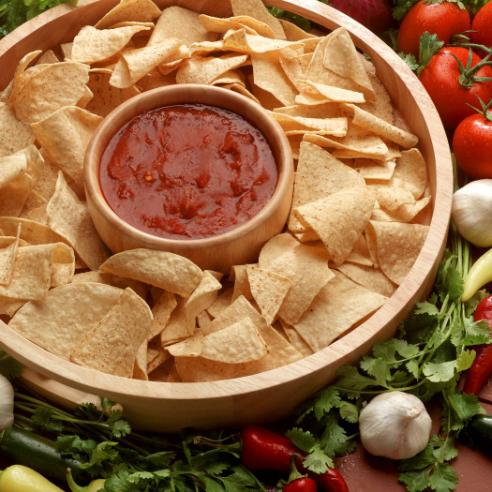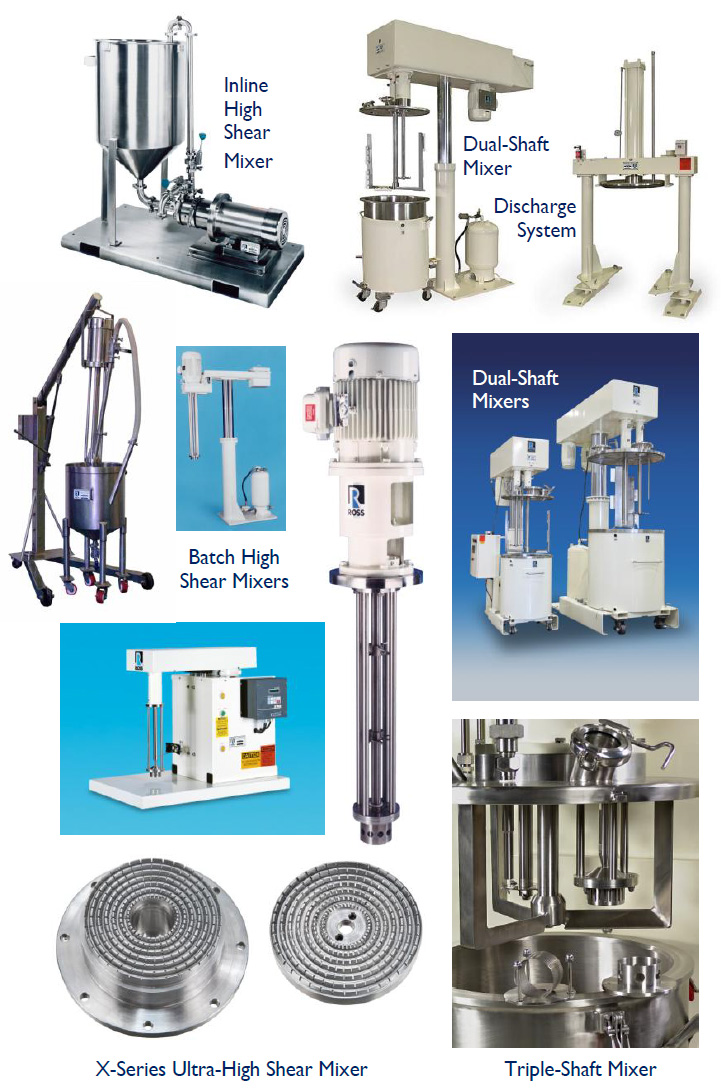Tech Report
Recommended Mixing Equipment for Sauces and Dressings

Application Summary
Many types of food mixing equipment overlap in use and function such that certain applications - like dips, sauces and dressings - can be produced in more than one mixing system. Especially in the food industry wherein manufacturers always look for the best combination of performance and value, economics often rule out those alternatives that require a more costly initial investment. However, differences in efficiency and equipment versatility must not be overlooked. To gain the most out of ever-moving trends in flavor profiles and ingredients, manufacturers of dips, sauces and dressings can optimize production by investing in a mixing strategy suited for a wide range of viscosity, shear and volume requirements.
Ross High Shear Mixers and Multi-Shaft Mixers
In the mass production of dips, sauces and dressings, manufacturers rely on high speed mixers to accomplish a variety of processing objectives including emulsification, homogenization, liquefaction and particle size reduction. High Shear Mixers, for instance, are widely used throughout the food industry for preparing stable emulsions, thickened solutions and solid dispersions under 10,000 centipoise (cP). The basic single-stage design features a four-blade rotor that turns at tip speeds around 3,000-4,000 ft/min within a close tolerance fixed stator. It creates mechanical and hydraulic shear by continuously drawing product components into the rotor and expelling them radially through the openings in the stator. As the operator charges soft solids and powders into the batch, these ingredients are subsequently pureed, dispersed or dissolved usually within a very short cycle time.
Products that undergo high peak viscosities are batched in Multi-Shaft Mixers equipped with two or more independently-driven agitators working in tandem to deliver a robust combination of high shear agitation and laminar bulk flow. The simplest design is the Dual-Shaft Mixer which features a low-speed anchor and a high-speed saw-tooth disperser blade. The wings of the anchor agitator normally include adjustable scrapers for wiping the vessel bottom and sidewalls. Users thus benefit from tighter temperature control in addition to enhanced product turnover.
Ross Ultra-High Shear Mixers
Aside from viscosity, the level of smoothness required for a particular recipe is another key consideration in mixer selection. For instance, after all ingredients are combined and brought to a uniform consistency in a Dual-Shaft Mixer, the resulting paste-like product may be fed into an inline Ultra-High Shear Mixer to improve smoothness and further reduce the size of suspended solid particles. Certain vegetables and fruits have hard skins or seeds that are difficult to disintegrate and can render a grainy quality to the mixture. The specialized rotor in a Ross Ultra-High Shear Mixer runs at tip speeds over 11,000 ft/min and can quickly break down solids into even finer pieces than is possible in a regular rotor/stator. A visibly smoother texture is normally achieved in just a single pass. This technology is also proven to replace expensive colloid mills while producing better quality emulsions at much higher throughputs.
Just a few Food Applications of Ross Mixers and Blenders:
- Baking Premixes
- Batter and Dough
- Candies
- Cheese Spreads
- Chocolate Fillings
- Coffee
- Condiments
- Extruded Foods
- Flavorings
- Food Casings
- Gum Dispersions
- Hummus Paste
- Nutraceuticals
- Peanut Butter
- Pizza Sauces
- Salads for Sandwiches
- Seasonings
- Spice Blends
- Sweeteners
- Syrups
- Tea Blends
- Trail Mixes
